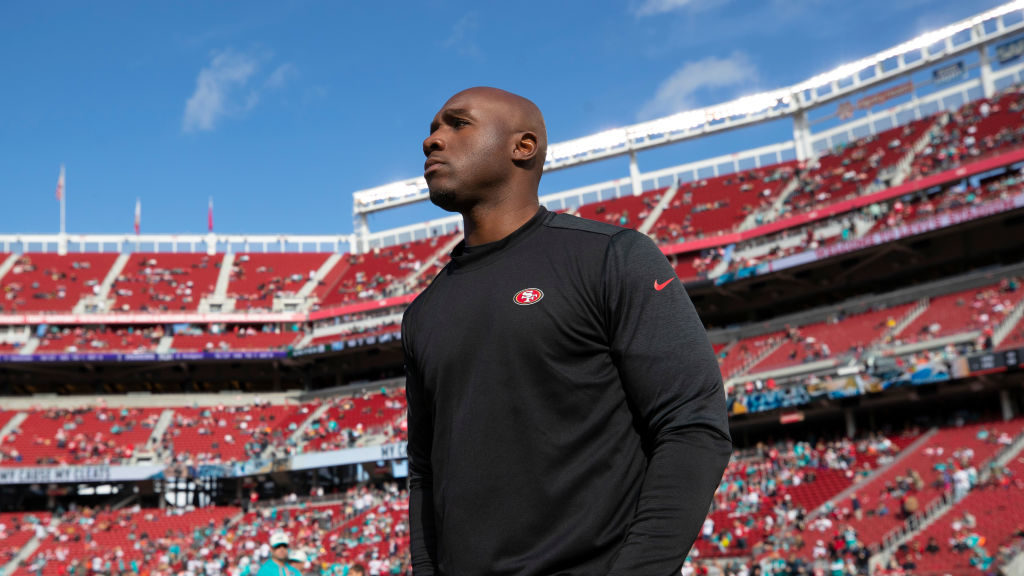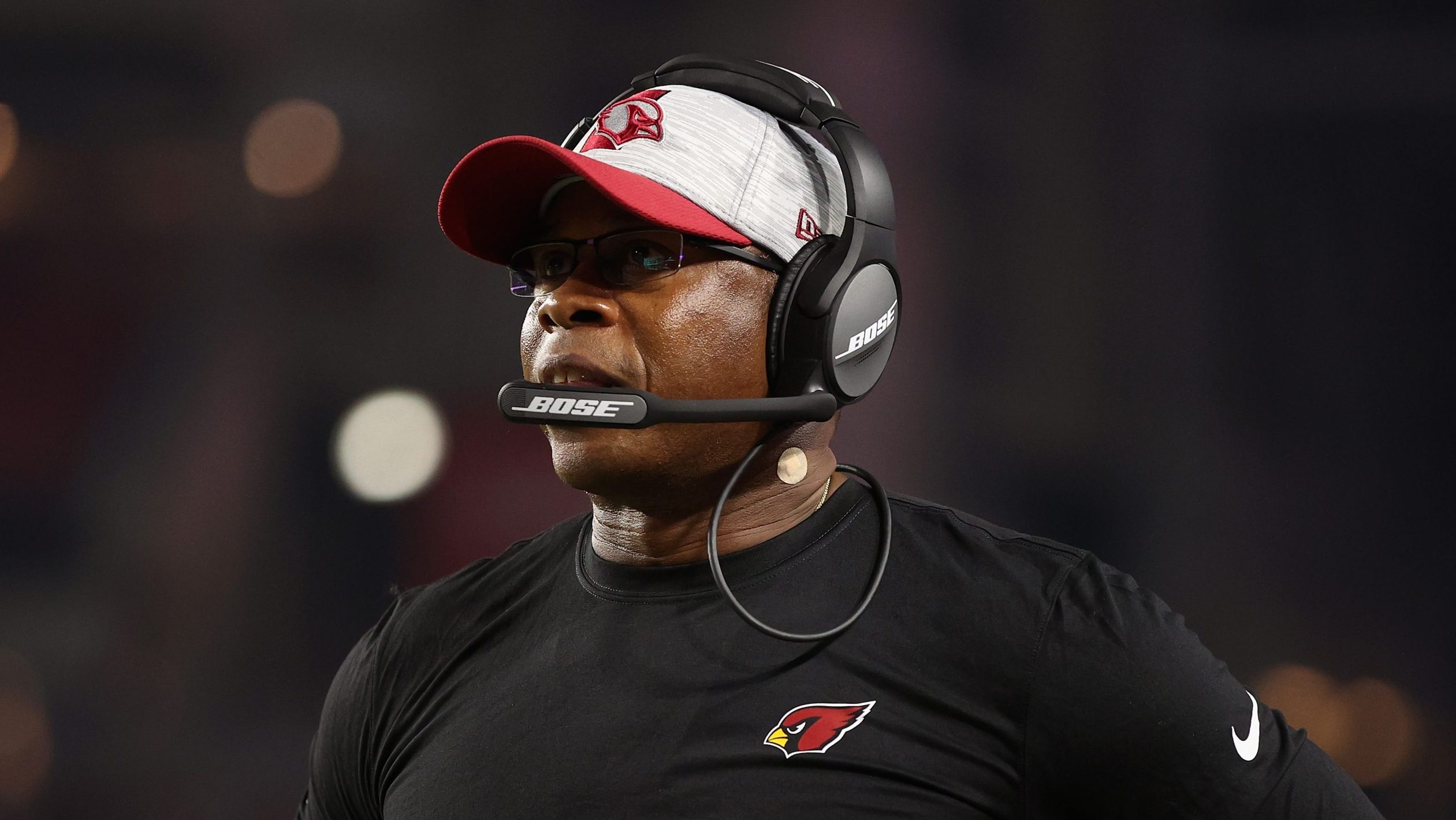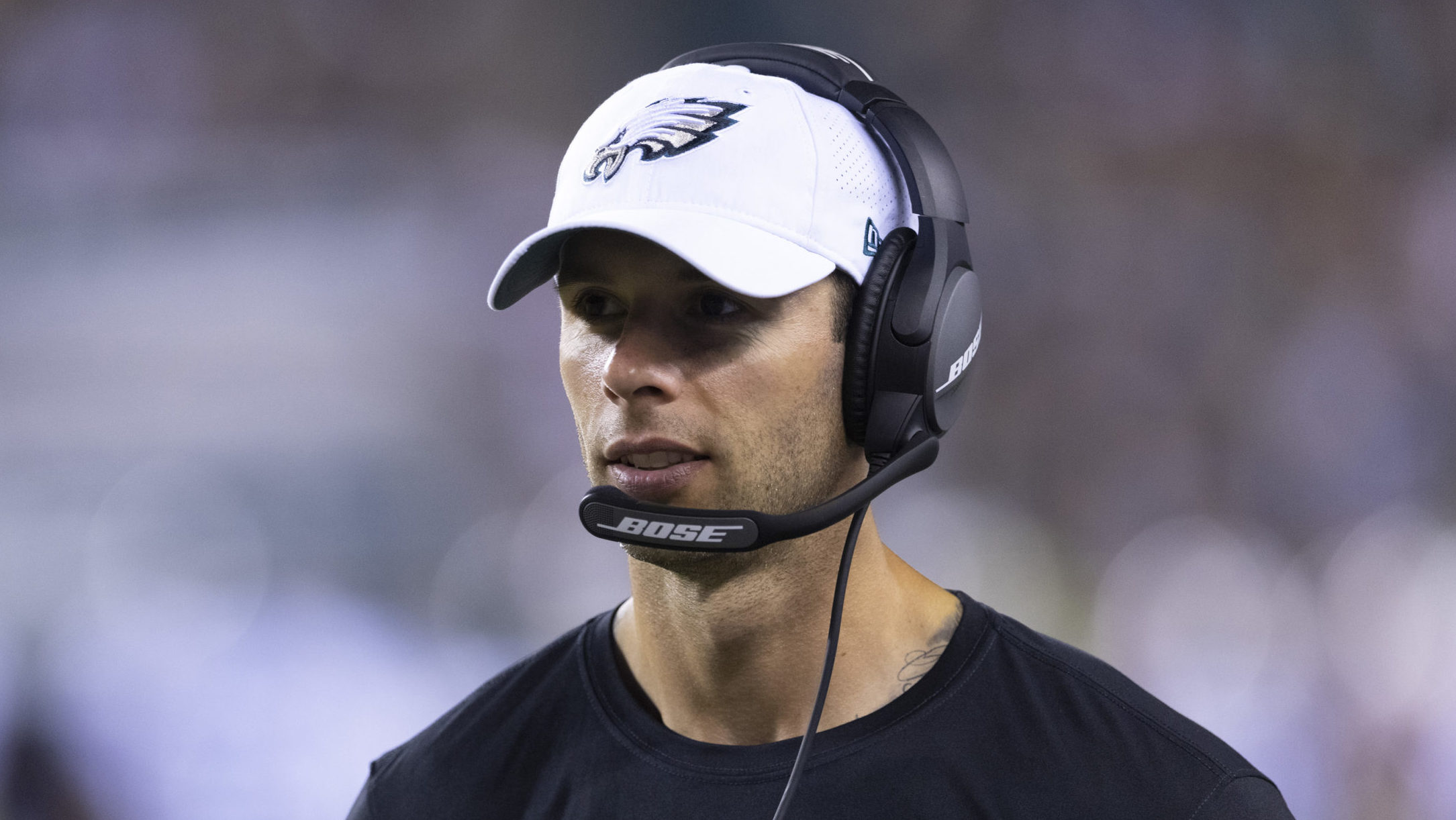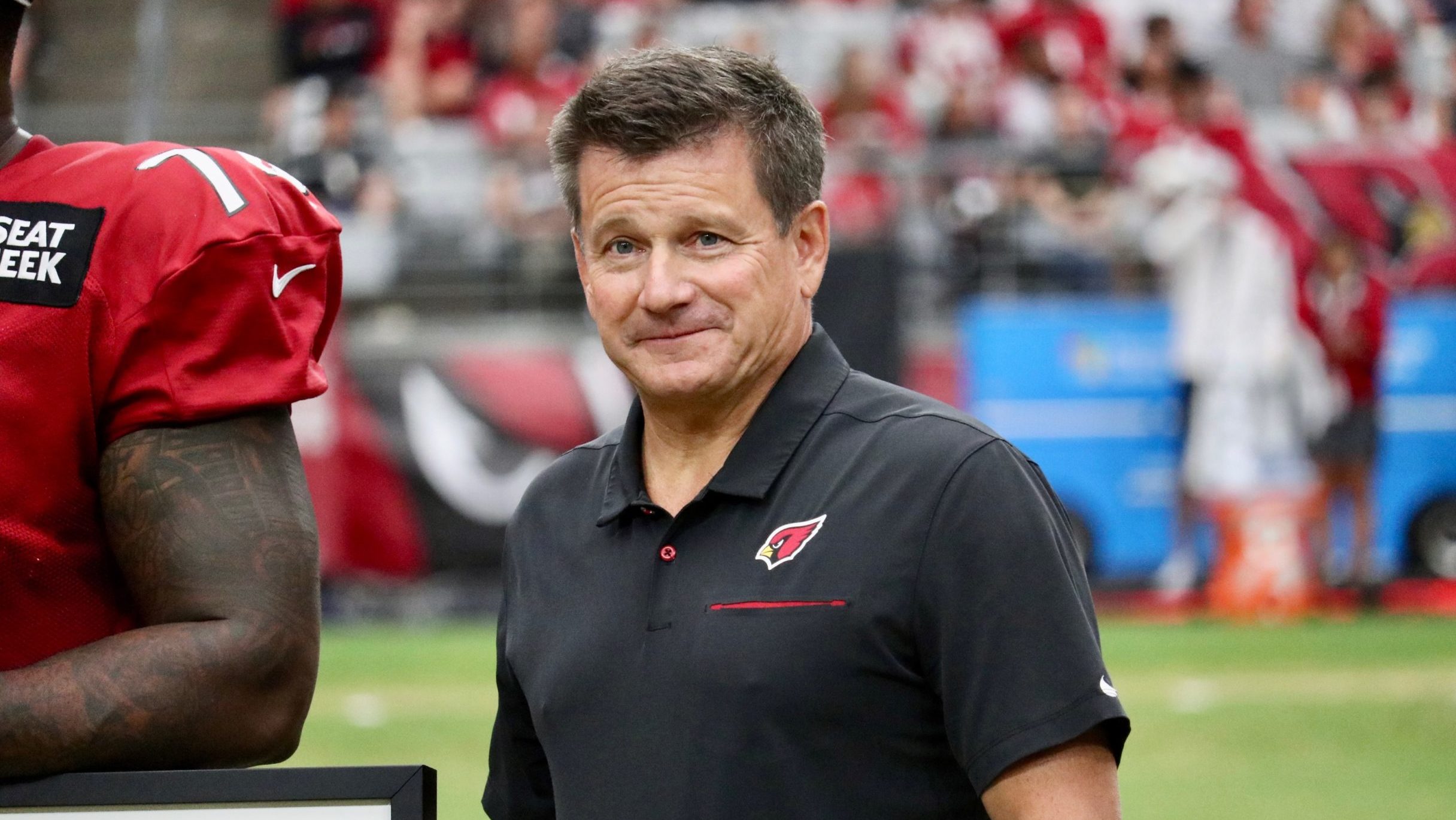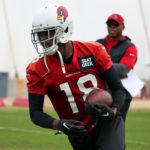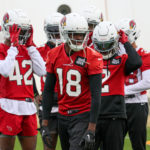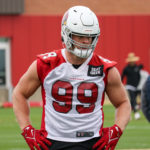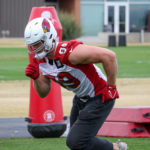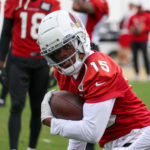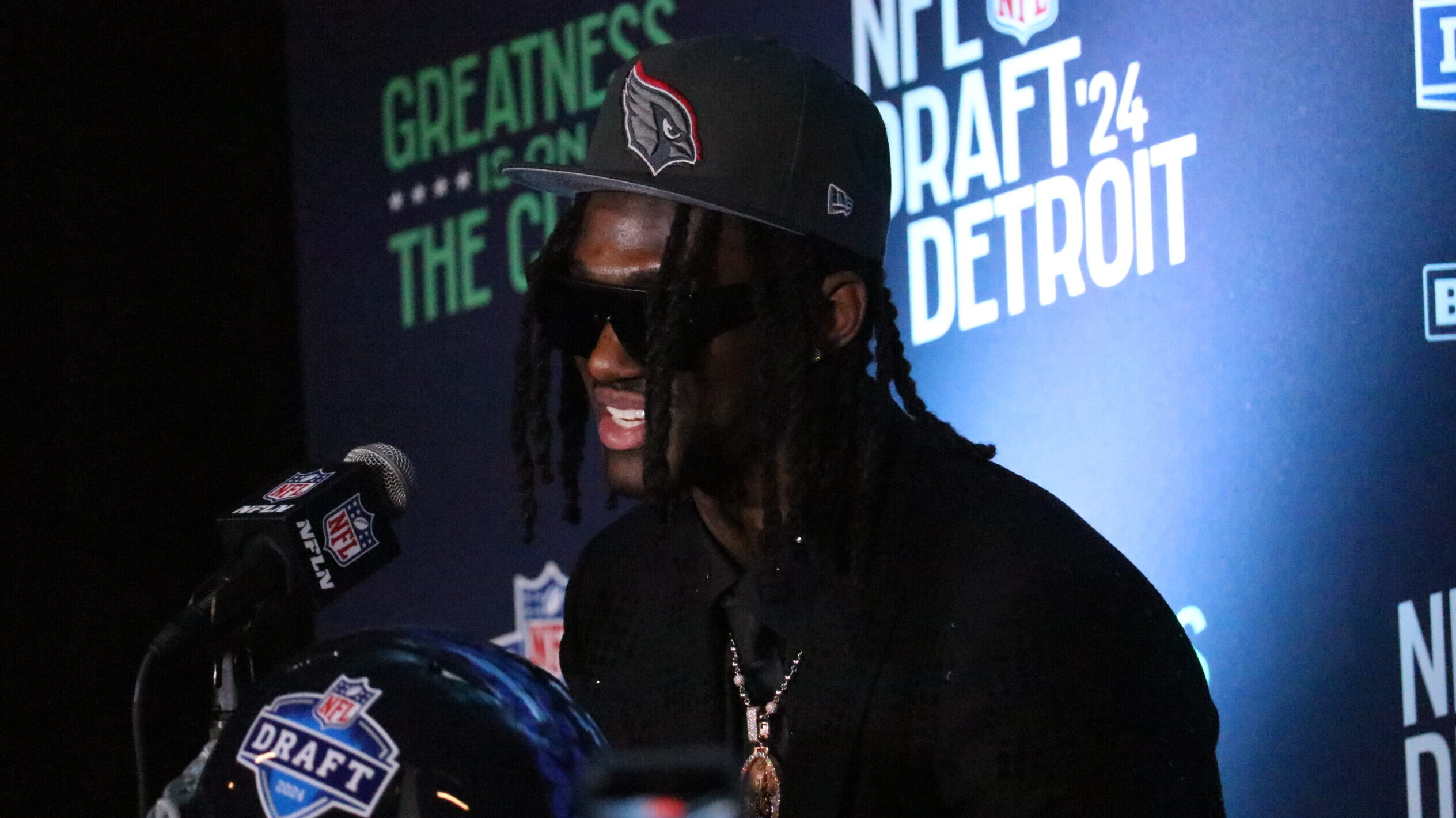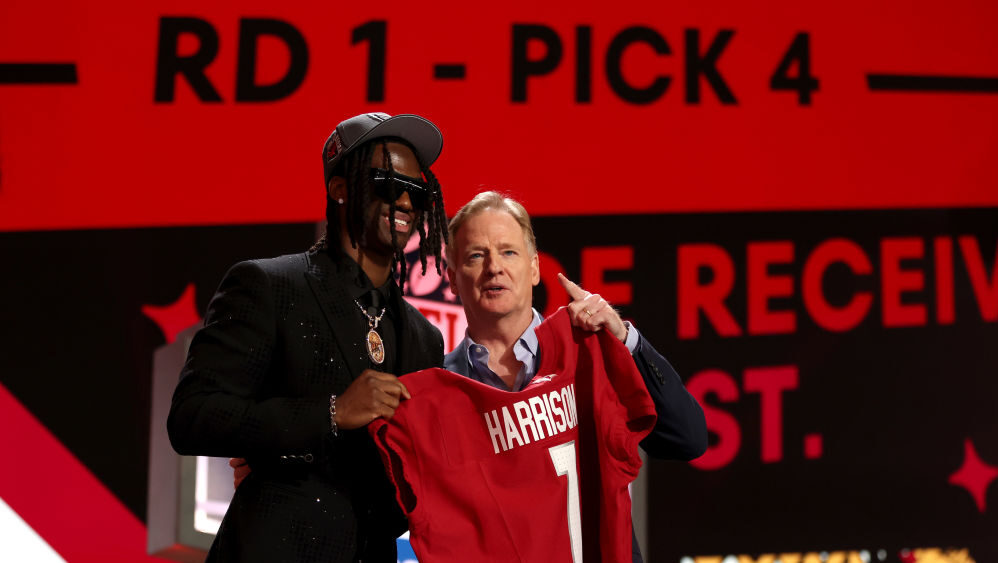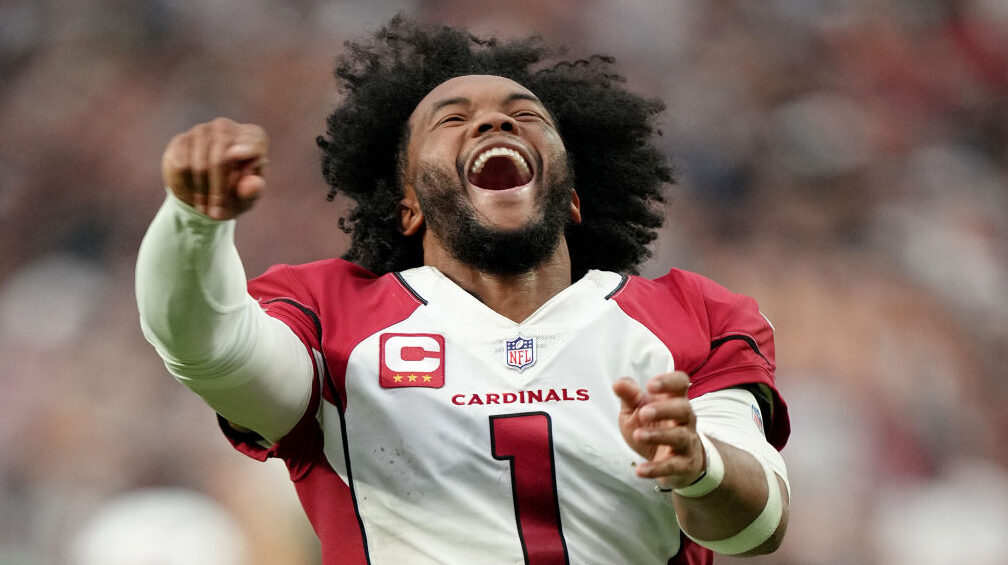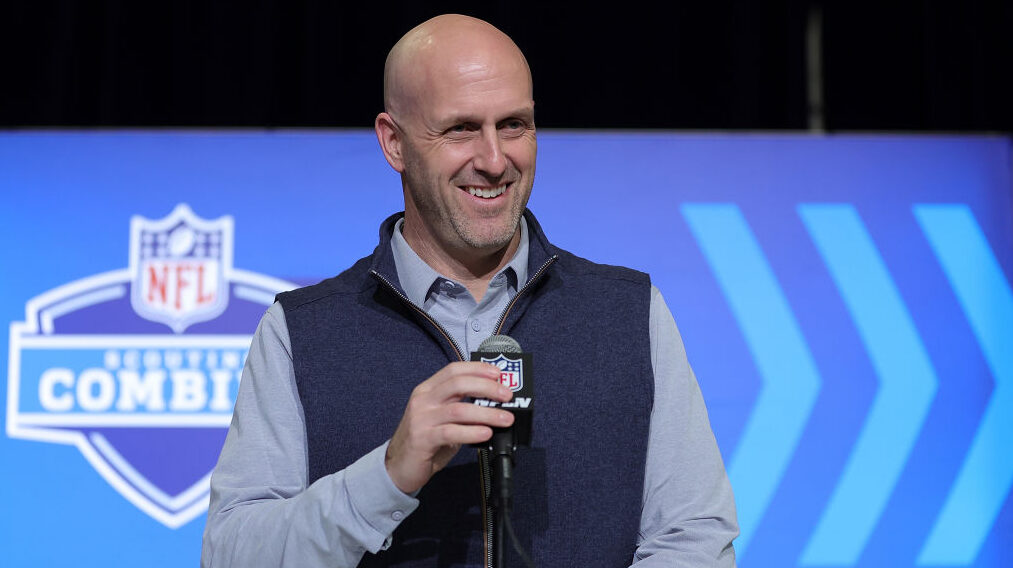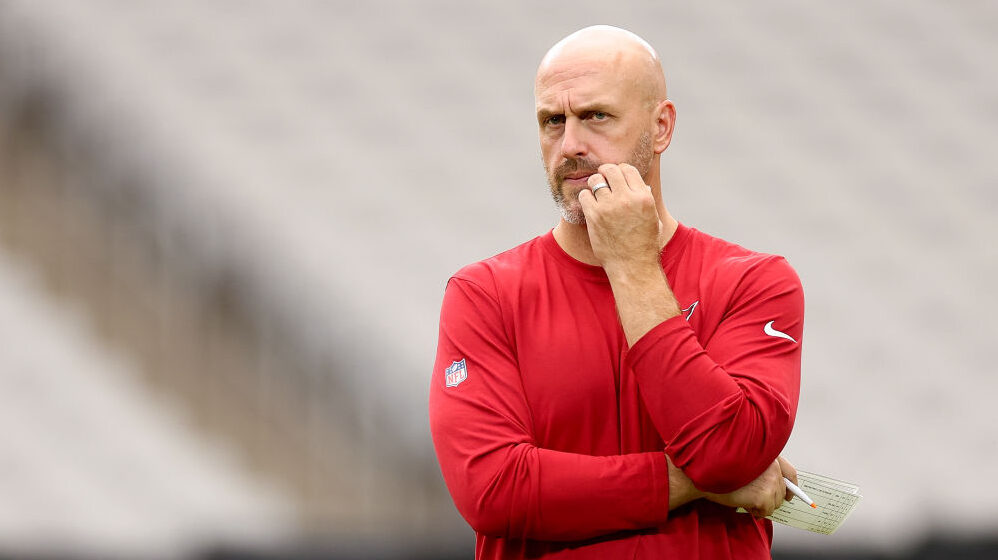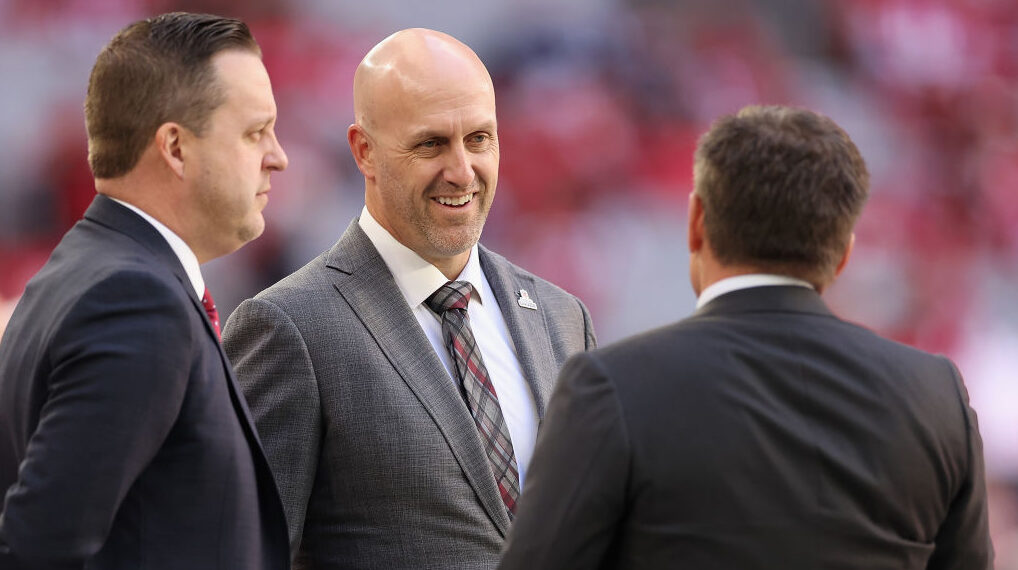Trading DeAndre Hopkins: Should the Arizona Cardinals make it happen?
Jan 15, 2023, 7:07 AM
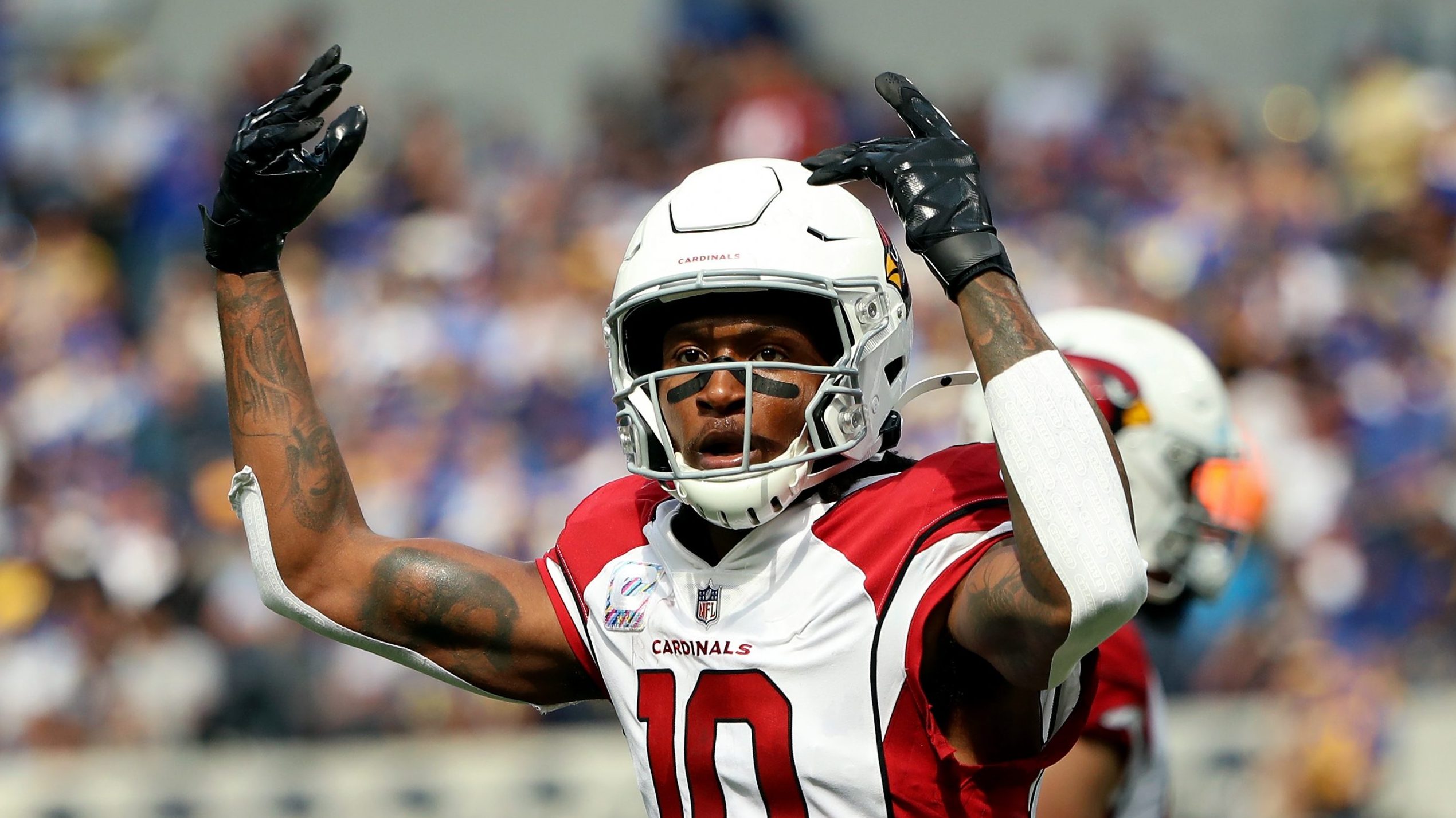
DeAndre Hopkins #10 of the Arizona Cardinals reacts after a Cardinals touchdown against the Los Angeles Rams in the second quarter at SoFi Stadium on October 03, 2021 in Inglewood, California. (Photo by Katelyn Mulcahy/Getty Images)
(Photo by Katelyn Mulcahy/Getty Images)
Among the many decisions that the Arizona Cardinals have to make this offseason sits No. 1 wide receiver DeAndre Hopkins.
While he’s got two seasons left on his current contract, making $19.4 million next year and $14.91 million in 2024, the wideout’s name has been thrown around early on this offseason — and even during the last few weeks of the season — as a potential trade piece to give the Cardinals some cap relief and added assets for a reset.
In 2023, he carries a cap hit of $30.7 million before that number drops slightly to $26.2 million in 2024. The last two seasons of his current deal are also nonguaranteed, meaning the wide receiver would more likely than not be looking for a new deal with whatever team acquires his services, much like what happened in 2020 when the Cardinals worked out a new deal shortly after he was traded to Arizona.
There are certainly cases for and against trading the wideout. Let’s start with the latter:
Reasons for Cardinals to keep DeAndre Hopkins
Hopkins has been the unquestioned go-to option since his arrival to the desert in 2019. In 35 games played over the past three seasons, the wideout has recorded 2,696 receiving yards and 17 touchdowns on 221 catches.
Despite missing time in 2021 due to injuries (seven games), Hopkins still paced all Cardinals pass catchers with eight scores.
This season was a similar result. Although he was sidelined for the first six games due to a PED suspension before a knee injury forced him out of the last two of the season, Hopkins was still atop the Cardinals’ leaderboard in terms of receiving yards with 717. He trailed only Hollywood Brown (67) in catches with 64 and tight end Zach Ertz (four) in receiving touchdowns with three.
When he’s on the field, defenses are forced to play the offense a whole lot differently with more than one set of eyes usually fixed on the wideout, knowing it has to contend with one of the league’s best.
There’s also Hopkins’ influence on his teammates to consider, especially the younger ones.
Since Hopkins’ tenure in the Valley began, he’s been a veteran voice for many on offense and defense, lending tips and tricks on the regular to fellow wideouts and Arizona defenders. Being around one of the best to ever do it certainly has its perks. If he is down to sign up for what could be a rough go of it for an organization littered with change, bringing him back is not a terrible idea in the least.
With a new GM and head coach incoming, the pairing of quarterback Kyler Murray and the wide receiver could be a big piece in bouncing back to relevancy.
In their only full season together (2020), Murray turned in his best season as a pro behind 3,971 yards and 26 touchdowns, both career highs, on 67.2% passing. He also accounted for 819 yards and 11 scores on the ground.
Hopkins was far and away Murray’s biggest target that season, pacing all Cardinals pass catchers in yards (1,407), catches (115), targets (160), yards after catch (527), first downs (75) and plays of at least 20 receiving yards or more (17). He tied then-Cardinals WR Christian Kirk in receiving touchdowns (six).
The following season began a lot like 2020 in terms of the duo’s chemistry with one another. During the team’s 7-0 start to the year, Hopkins caught seven of Murray’s passing touchdowns to go along with 420 yards on 33 catches (47 targets).
Then the injury bug hit Hopkins and Arizona’s offensive output in one fell swoop. Missing seven of the last nine games in the season with hamstring and knee injuries, Hopkins managed just 86 yards and a touchdown on seven catches in his final two games of the year.
His absence — along with Murray’s three-game stint on the shelf with an ankle injury — was damning in the win-loss column, as the team went 3-6 to finish the season.
Hopkins’ stretch of missed games continued into this past season thanks to his six-game suspension for PEDs. Arizona went 2-4 in that span, with Murray not putting up the same type of numbers he was with Hopkins in the fold.
As soon as Hopkins returned, he instantly shot up the stat sheet, recording three touchdowns and 385 yards on the 28 passes Murray sent his way in the four full games they played together before the QB tore his ACL three plays into a Week 14 loss to the New England Patriots.
And with Murray likely missing at least part of next season as he recovers from his torn ACL, will Hopkins want to really endure another year that could very much look like the one we just watched come to an unceremonious end in 2022?
Trading Hopkins would provide salary cap relief
Shipping him elsewhere would undoubtedly provide some much-needed cap relief for a team needing to rebuild its roster following a 4-13 finish last season that resulted in head coach Kliff Kingsbury’s firing.
What better way to kick off a new regime with additional assets the new GM and head coach can have a say in?
Per OverTheCap and Spotrac, if the Cardinals moved Hopkins via trade before or on June 1, the team would free up $8.1 million in cap in 2023. Trading the WR after June 1 would net Arizona $19.4 million and $14.9 million over the next two seasons.
The issue, though, lies with the dead money situation.
If the team trades Hopkins before or on June 1, Arizona would have to shell out $22.6 million in dead money next season. Making a deal after June 1 would mean a dead money hit of $11.3 million in each of the next two seasons.
The post-June 1 option sounds better, right?
Too bad that is the least likely option to happen of the two.
By June, a good chunk of the offseason has already run its course. The NFL Draft will be completed, free agency has already kicked off and offseason workouts are already in full swing. Any team trying to acquire Hopkins’ services would be inclined to move on a deal sooner rather than later.
And while a deal before June 1 would bring about the dead money situation, waiting to trade Hopkins would mean keeping his cap hit on the Cardinals’ books through crucial offseason dates, including the start of free agency in March.
That is if Hopkins is cool with it.
Thanks to the no-trade clause in his contract, the wide receiver will have the final say on any potential deal.
When next season rolls around, Hopkins will be 31 and playing in Year 11. He’s in the back half of his career and could very well be against any sort of rebuild in Arizona or elsewhere.
Going to a contender gives Hopkins the opportunity to vie for a Super Bowl and further make his case for the Hall of Fame — even though that already feels like a shoo-in at this point.
There’s also the Cardinals’ return for the wide receiver to keep in mind.
When the team acquired Hopkins and a 2020 fourth-round pick from the Houston Texans in 2020 in exchange for running back David Johnson, a 2020 second-round pick and a 2021 fourth-round pick, the Cardinals were the clear-cut winners of the deal.
It also helped that the Cardinals were willing to give Hopkins the contract extension he highly sought after in addition to the wide receiver appearing to have his differences with then-Texans head coach and GM Bill O’Brien.
Don’t expect the Cardinals to lower its asking price to that range.
Hopkins may have missed 15 games over the course of the past two seasons and hasn’t hit the 1,000-yard mark since 2020, but there’s denying his talent on the football field.
At the very least, he should garner a late first-round pick in whatever type of package Arizona can get for the WR.


